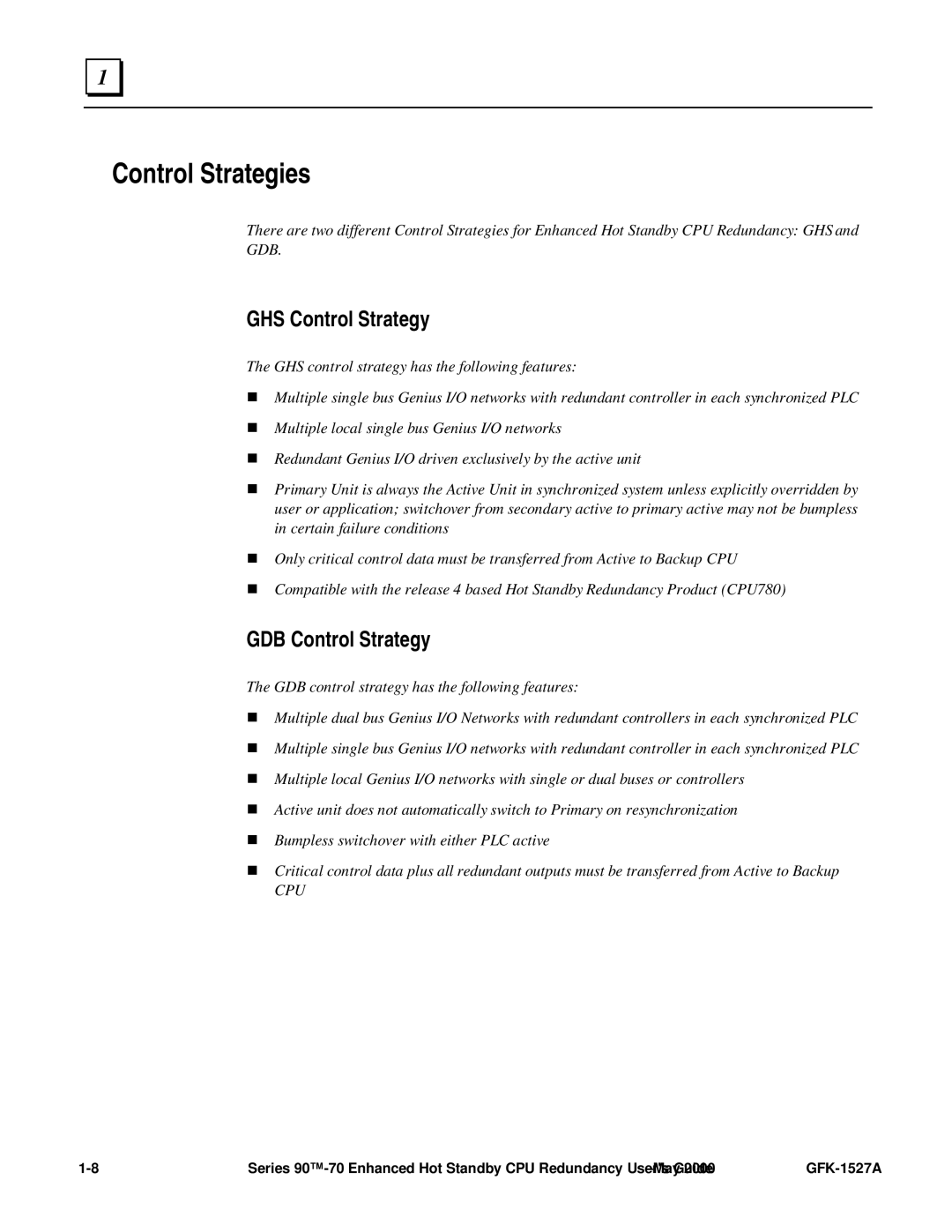1 |
Control Strategies
here are two different Control Strategies for Enhanced Hot Standby CPU Redundancy: GHS and GDB.
GHS Control Strategy
he GHS control strategy has the following features:
Multiple single bus Genius I/O networks with redundant controller in each synchronized PLC Multiple local single bus Genius I/O networks
Redundant Genius I/O driven exclusively by the active unit
Primary Unit is always the Active Unit in synchronized system unless explicitly overridden by user or application; switchover from secondary active to primary active may not be bumpless in certain failure conditions
TOnly critical control data must be transferred from Active to Backup CPU Compatible with the release 4 based Hot Standby Redundancy Product (CPU780)
GDB Control Strategy
he GDB control strategy has the following features:
Multiple dual bus Genius I/O Networks with redundant controllers in each synchronized PLC Multiple single bus Genius I/O networks with redundant controller in each synchronized PLC Multiple local Genius I/O networks with single or dual buses or controllers
Active unit does not automatically switch to Primary on resynchronization
TBumpless switchover with either PLC active
Critical control data plus all redundant outputs must be transferred from Active to Backup
CPU
Series |
